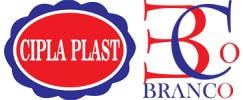Filter interviews by
Melody Healthcare QC Officer Interview Questions and Answers
Melody Healthcare QC Officer Interview Experiences
1 interview found
I applied via Company Website and was interviewed before Aug 2020. There were 3 interview rounds.
Interview Questionnaire
4 Questions
- Q1. What is PH ?
- Ans.
PH stands for potential of hydrogen. It is a measure of the acidity or alkalinity of a solution.
PH is a scale that ranges from 0 to 14.
A pH of 7 is considered neutral, below 7 is acidic, and above 7 is alkaline.
The lower the pH value, the more acidic the solution is.
The higher the pH value, the more alkaline the solution is.
pH is an important parameter in various fields such as chemistry, biology, and environmental sci...
- Q2. Difference between melting range and melting point
- Ans.
Melting range is the temperature range at which a substance melts, while melting point is the temperature at which it fully melts.
Melting range is a range of temperatures at which a substance starts to melt and finishes melting.
Melting point is the temperature at which a substance fully melts and becomes a liquid.
Melting range is usually wider than melting point.
Melting range is affected by impurities in the substance.
...
- Q3. Melting point is the same as its freezing point.melting range is the compound are first begin to liquefy to the point at which the sample is liquid.
- Q4. What is solubility?
- Ans.
Solubility is the ability of a substance to dissolve in a solvent.
Solubility is a physical property that describes how well a substance dissolves in a particular solvent.
It is usually expressed as the maximum amount of solute that can dissolve in a given amount of solvent at a specific temperature and pressure.
Solubility depends on factors such as the nature of the solute and solvent, temperature, and pressure.
For exam...
Interview Preparation Tips
Top trending discussions






Interview questions from similar companies

I applied via Walk-in and was interviewed in Sep 2023. There were 3 interview rounds.

(2 Questions)
- Q1. HPLC .UV,DIssolution intrument
- Q2. What is cgmp and HPLC analysis
(3 Questions)
- Q1. What mean by HPLC Principle. Of or intrument
- Ans.
HPLC stands for High Performance Liquid Chromatography. It is a technique used to separate, identify, and quantify components in a mixture.
HPLC is based on the principle of separating components in a mixture using a liquid mobile phase and a solid stationary phase.
It is commonly used in pharmaceutical, environmental, and food industries for analyzing compounds.
HPLC instruments consist of a pump, injector, column, detec...
- Q2. What mean by UV and principle of of UV What mean by cgmp and
- Ans. The determine the absorbunce of the compound by using lambers and bears law
- Q3. What mean cgmp What sulfated ash of compound

I applied via Naukri.com and was interviewed in Feb 2024. There were 6 interview rounds.
Graduated phamrmacy aptitude test
Antibacterial activity cheak of thriphala diffusion method
Emergency case study
Production tablet in coding
Work simple with group discussion
(7 Questions)
- Q1. I wanna hr in pharmacist industry
- Q2. My strength my weakness
- Q3. Opportunity of faithful
- Q4. Honestly work in componies
- Q5. Right regularity athority .
- Q6. Honestly work in pharmacists
- Q7. Confidently work start.
Interview Preparation Tips
- Industrial qc
- Industrial regularleity affair
- Industrial research
- Pharmacist
- Pharmacutical production
- Despensing
- Gernal ward
- Assistan of surgeon
- Microbiologist
- Analytical Chemistry

I applied via Walk-in and was interviewed in Sep 2023. There were 3 interview rounds.

(2 Questions)
- Q1. HPLC .UV,DIssolution intrument
- Q2. What is cgmp and HPLC analysis
(3 Questions)
- Q1. What mean by HPLC Principle. Of or intrument
- Ans.
HPLC stands for High Performance Liquid Chromatography. It is a technique used to separate, identify, and quantify components in a mixture.
HPLC is based on the principle of separating components in a mixture using a liquid mobile phase and a solid stationary phase.
It is commonly used in pharmaceutical, environmental, and food industries for analyzing compounds.
HPLC instruments consist of a pump, injector, column, detec...
- Q2. What mean by UV and principle of of UV What mean by cgmp and
- Ans. The determine the absorbunce of the compound by using lambers and bears law
- Q3. What mean cgmp What sulfated ash of compound
I applied via Indeed and was interviewed in Jan 2023. There were 2 interview rounds.

(9 Questions)
- Q1. What is HPLC? Tell me about your self
- Ans.
HPLC is a technique used in analytical chemistry to separate, identify, and quantify components in a mixture.
HPLC stands for High-Performance Liquid Chromatography.
It is a widely used technique in pharmaceutical, chemical, and food industries.
HPLC utilizes a liquid mobile phase and a solid stationary phase to separate and analyze components in a sample.
It is highly sensitive and can detect and quantify even trace amoun...
- Q2. What is acid and base?
- Ans.
Acid is a substance that donates hydrogen ions (H+) and base is a substance that accepts hydrogen ions (H+).
Acids have a pH less than 7 while bases have a pH greater than 7.
Acids taste sour and can cause burns while bases taste bitter and feel slippery.
Examples of acids include vinegar, lemon juice, and hydrochloric acid while examples of bases include baking soda, soap, and bleach.
- Q3. What is pH? What is environmental monitoring in microbiology
- Ans.
pH is a measure of acidity or alkalinity of a solution. Environmental monitoring in microbiology is the process of monitoring the microbial contamination in the environment.
pH is measured on a scale of 0-14, with 7 being neutral, below 7 acidic and above 7 alkaline
Environmental monitoring in microbiology involves sampling and testing of air, water, surfaces, and personnel for microbial contamination
The purpose of envir...
- Q4. What Air monitoring? Difference between gram+ ve and gram - ve?
- Ans.
Air monitoring is the process of measuring and analyzing the quality of air. Gram+ ve and gram - ve refer to different types of bacteria based on their cell wall structure.
Air monitoring involves collecting air samples and analyzing them for pollutants, allergens, and other contaminants.
Gram+ ve bacteria have a thick peptidoglycan layer in their cell wall, while gram - ve bacteria have a thinner peptidoglycan layer.
Gra...
- Q5. Examples of gram positive and negative
- Ans.
Gram positive and negative are two types of bacteria based on their cell wall structure.
Gram positive bacteria have a thick peptidoglycan layer in their cell wall.
Examples of gram positive bacteria include Staphylococcus aureus and Streptococcus pneumoniae.
Gram negative bacteria have a thin peptidoglycan layer and an outer membrane.
Examples of gram negative bacteria include Escherichia coli and Pseudomonas aeruginosa.
- Q6. What is MLT ? Gram staining?
- Q7. Principal of uv/ vis spectrometry ? Range of uv and vis
- Ans.
UV/Vis spectrometry measures the absorption of light in the UV and visible range to identify and quantify substances.
UV/Vis spectrometry is based on the principle that molecules absorb light in the UV and visible range.
The range of UV light is typically 200-400 nm, while the range of visible light is 400-700 nm.
UV/Vis spectrometry is commonly used in analytical chemistry to identify and quantify substances in a sample.
...
- Q8. Beer and Lambert law, FT-IR
- Q9. Electrophoresis, blotting technique
Interview Preparation Tips
Recruiter and interviewer know that I am female...they wasted my lot of time...
Please don't go there... Highly unprofessional people. 🙏🙏🙏🙏🙏

I applied via Walk-in and was interviewed in Dec 2021. There was 1 interview round.
Interview Questionnaire
5 Questions
- Q1. Can you please asked related from my qc
- Q2. For eg.which chemical used in kf titration
- Ans.
Potassium iodide (KI) is commonly used in Karl Fischer (KF) titration.
Potassium iodide (KI) is added to the Karl Fischer reagent to enhance the solubility of water.
KI reacts with water to form iodine, which is then titrated with the Karl Fischer reagent.
The reaction between KI and water in KF titration is as follows: KI + SO2 + H2O → KHSO4 + I2
The iodine formed is then quantitatively determined by titration with the Ka...
- Q3. Application of HPLC .
- Ans.
HPLC is a technique used to separate, identify, and quantify components in a mixture.
HPLC stands for High Performance Liquid Chromatography.
It is commonly used in pharmaceuticals, food and beverage, and environmental testing.
HPLC can separate and quantify complex mixtures of compounds.
It can be used to detect impurities in drugs and determine their concentration.
HPLC can also be used to analyze the composition of food ...
- Q4. Advantages and dis advantages of ftir
- Ans.
FTIR is a powerful analytical technique used for identifying and quantifying chemical compounds.
Advantages: non-destructive, rapid, requires minimal sample preparation, can analyze a wide range of compounds, can be used for qualitative and quantitative analysis
Disadvantages: expensive equipment, requires trained personnel, may require calibration, may not be suitable for analyzing certain compounds
Example: FTIR can be ...
- Q5. Titration based questions
Interview Preparation Tips
Melody Healthcare Interview FAQs
Tell us how to improve this page.
Interview Questions for Popular Designations
Interview Questions from Similar Companies
|
Assistant Manager
16
salaries
| ₹7.5 L/yr - ₹12.1 L/yr |
|
Officer
16
salaries
| ₹2.7 L/yr - ₹5 L/yr |
|
QC Officer
13
salaries
| ₹2.3 L/yr - ₹4.6 L/yr |
|
Production Officer
12
salaries
| ₹3.2 L/yr - ₹4.5 L/yr |
|
QA Officer
8
salaries
| ₹2.7 L/yr - ₹5 L/yr |

Apollo Hospitals

Fortis Healthcare

Max Healthcare

Narayana Health
- Home >
- Interviews >
- Melody Healthcare Interview Questions >
- Melody Healthcare QC Officer Interview Questions











